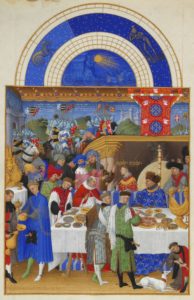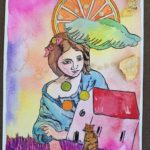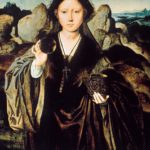Les Très Riches Heures du Duc de Berry
Barthélemy d’Eyck. Limbourg Brothers and Jean Colombe. Les Très Riches Heures du Duc de Berry or Les Très Riches Heures (15th-century). Condé Museum, France.
A Feast for the Senses
Over the course of the Middle Ages and early modern history, banquets figured as an act of display of power, as much as a spectacle in the service of the traditional five senses (sight, hearing, smell, taste, and touch). In fact, these encounters provoked a particular sensory experience in the guests. The diners followed a series of rules, according to a common ritual practice. The staging of these performances was envisioned to stimulate different sense modalities. For instance, by arranging food according to size, texture, and colour, and by presenting it in great abundance, the banquet served as a medium for gustatory activation. Likewise, the introduction of entremets often complemented the act of eating. While entremets were being presented, a number of dance, theatre and musical performances were also being held. Thus, all of these moments produced a sonic, visual, and tactile experience in the invitees.
This sensory activation can be appreciated in “The Very Rich Hours of the Duke of Berry” (1410), a book of hours commissioned by Jean de Berry (1340-1416), a French prince from the House of Valois belonging to the Capetian dynasty. The book consists of 206 leaves, and contains 131 miniatures, depicting the months of the year, and related seasonal activities—mostly agricultural. Each illustration is surmounted by a hemisphere corresponding to each month, and shows Helios, the sun god in Classical Greek mythology, together with the different signs of the zodiac.
The chosen image shows the month of January. The banquet scene would have been one of a series of feasts organized by the Duke de Berry. In this scene, we notice various elements that contribute to the making of a unique sensory experience. The such element is indeed the food, which stands out mostly because of its arrangement, and the tableware in which it is presented, rather than because of its variety. The colour of the eating utensils exhibits both their materiality (gold) and texture (carved). The burgundy colour of the wine, which is distinctive of the French court, draws our attention too. The second element is the texture and the colour of the participants’ garments, especially the colour blue, signifying the royal status of the host.
A sensory interpretation of this work reveals the moving nature of the image. It moves towards the interior of the scene, showing a correlation between the status of the participants and the way in which they are depicted, and the details of their garments and their faces, among other features. In this image, different perceptual modalities come into play, thanks to the painter’s ability to capture key moments of tactile stimulation, together with the gustatory and the olfactory. For instance, we can see how the artist depicted the very moment in which one of the diners takes a piece of food to his mouth, and how a guest is pouring wine while another one drinks it. A series of hand and mouth gestures giving the impression of dialogue constitute additional sensory operations that complement the scene. In sum, this work conveys a unique sensory experience that makes the status of the main character visible, and renders palpable their desire to display their power.
Gisela Coronado-Schwindt & Martina Díaz Sammaroni
Faculty of Humanities, National University of Mar del Plata
Mar del Plata, Argentina


